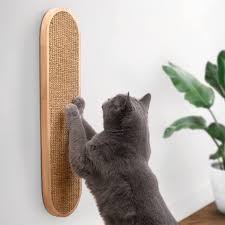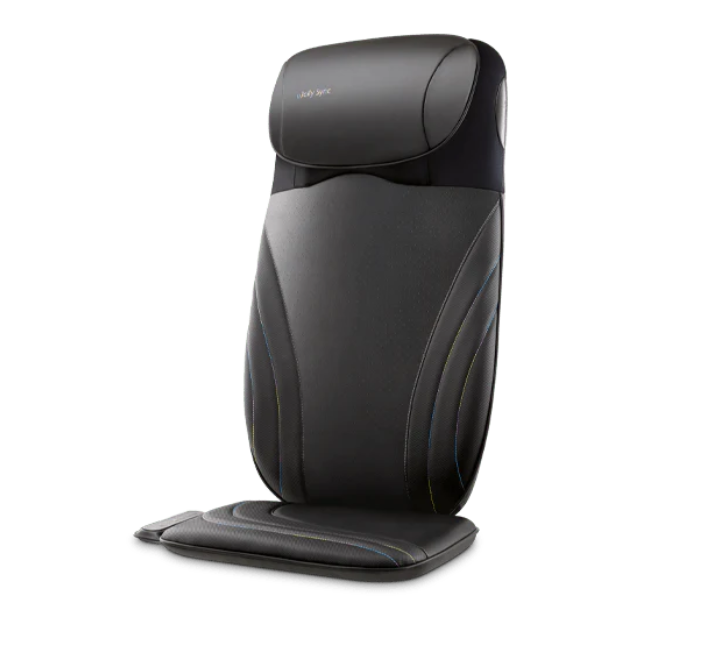Cat Scratcher Post: A Must-Have for Every Cat Owner

Anyone who’s lived with a cat knows how sharp their instincts are. Whether it’s climbing, pouncing, or curling up in the sun, cats have habits rooted in their natural behavior. One of the strongest of these instincts is scratching.
Scratching isn’t a sign of bad manners. It’s how cats care for their claws, mark their territory, and keep their muscles flexible. The problem is that when cats don’t have an outlet, your furniture, curtains, or carpets often pay the price. That’s where the cat scratcher post comes in.
A scratcher post gives cats a safe, satisfying surface to dig their claws into while sparing your home from destruction. It’s one of the simplest investments you can make for your cat’s happiness and your own peace of mind.
Why Do Cats Scratch?
Understanding why scratching is so important for cats helps explain why a scratcher post is essential. Cats scratch for several reasons:
- Claw health: Scratching sheds the outer sheath of their claws, keeping them sharp and healthy.
- Stretching: Reaching up and digging into a post helps cats stretch their back, shoulder, and leg muscles.
- Territory marking: Cats have scent glands in their paws. When they scratch, they leave behind both a visible mark and a scent signal for other cats.
- Stress relief: Like chewing gum or pacing for humans, scratching helps cats release pent-up energy and tension.
Since scratching is instinctive, it can’t be eliminated. Instead, the goal is to channel it into the right place—your cat scratcher post.
What Makes a Cat Scratcher Post Effective?
Not all scratching solutions are equal. A good cat scratcher post must:
- Be sturdy
- Cats put their full weight into scratching. A wobbly or lightweight post will tip over, discouraging use.
- Be tall enough
- Cats love a full-body stretch. Posts should be at least 24–32 inches tall for average cats and taller for large breeds like Maine Coons.
- Have the right texture
- Cats prefer materials that mimic bark, like sisal rope or fabric. Cardboard also works well for shredders.
- Be accessible
- Place the post where your cat likes to scratch, often near furniture, entryways, or their favorite nap spots.
When these needs are met, cats naturally gravitate toward the post instead of your sofa.
Types of Cat Scratcher Posts
Scratchers come in many designs, each catering to different cat personalities and home setups.
1. Sisal Rope Posts
- Wrapped in tough, fibrous rope that cats love to dig into.
- Long-lasting and durable.
- A favorite for households with enthusiastic scratchers.
2. Sisal Fabric Posts
- Covered in woven sisal material, which is smoother than rope.
- Provides a different scratching texture.
- Often used in premium posts with sleek designs.
3. Cardboard Posts
- Made from corrugated cardboard, offering a soft, shreddable feel.
- Affordable and replaceable, but wear out faster.
- Perfect for cats that prefer a lighter scratch.
4. Carpeted Posts
- Covered in carpet fabric, similar to older cat trees.
- Some cats enjoy the plush feel, though others may confuse it with floor carpeting.
5. Multi-Level Scratcher Towers
- Combine scratching posts with perches, condos, and toys.
- Great for active or multi-cat households.
- Provide both exercise and scratching outlets.
6. Wall-Mounted or Vertical Boards
- Fixed directly to walls to save floor space.
- Ideal for small apartments or minimalist setups.
Benefits of a Cat Scratcher Post
Protects Your Furniture
The most obvious benefit: less destruction. Cats with a dedicated post are far less likely to target sofas, beds, and chairs.
Encourages Exercise
Scratching engages muscles in the shoulders, back, and legs. A tall post lets cats stretch fully and stay limber.
Reduces Stress
Cats scratch more when they feel anxious or restless. A sturdy post provides an outlet for that energy.
Promotes Claw Health
Regular scratching helps prevent overgrown claws and keeps them in shape.
Supports Territory Needs
Especially in multi-cat households, posts allow each cat to mark territory without conflict.
Enhances Human-Cat Bond
Providing your cat with the right tools shows you respect their needs. It reduces frustration for both you and your pet.
How to Train Your Cat to Use a Scratcher Post
Some cats take to a new post immediately. Others need encouragement. Here’s how to make the transition smoother:
- Placement matters
- Put the post near where your cat already scratches. If the sofa arm is the target, place the post right beside it.
- Use attractants
- Sprinkle catnip, silvervine, or catnip spray on the post to make it irresistible.
- Interactive play
- Use feather wands or string toys around the post to encourage your cat to dig in.
- Reward success
- Praise and treat your cat whenever they use the post.
- Redirect gently
- If your cat scratches furniture, calmly move them to the post instead of scolding.
With consistency, cats quickly learn that the post is the preferred place to scratch.
DIY vs. Store-Bought Cat Scratcher Posts
If you’re handy, building a DIY scratcher post can be a fun project. With wood, sisal rope, and a sturdy base, you can make a custom post that fits your cat’s size and style.
DIY benefits:
- Budget-friendly.
- Fully customizable.
- A rewarding project for cat lovers.
Store-bought benefits:
- Professionally designed for stability.
- Often more durable than homemade versions.
- Sleek and decorative options available.
For most owners, buying a quality scratcher saves time and ensures safety, but DIY can be a great alternative if you enjoy crafting.
Where to Place a Cat Scratcher Post
Strategic placement makes all the difference:
- Near favorite resting spots (cats like to scratch after waking).
- In high-traffic areas where cats mark territory.
- Close to furniture that’s often scratched.
- For multi-cat homes, several posts in different rooms prevent conflict.
Caring for Your Scratcher Post
A post won’t last forever, but regular upkeep keeps it effective:
- Rotate or flip posts if possible for even wear.
- Vacuum loose fibers or cardboard.
- Replace when surfaces become too worn to engage cats.
Cats may stop using a post if it feels old or loses texture, so refreshing it regularly is key.
Cat Scratcher Post vs. Other Scratching Solutions
While posts are the most popular, other scratchers have their place:
- Scratch pads: Flat cardboard mats, great for floor-loving cats.
- Wall scratchers: Space-saving and stable, mounted to walls.
- Cat trees: Multi-functional, with built-in posts and perches.
The best setup often combines different options, ensuring your cat has variety.
The Role of Scratcher Posts in Enrichment
A cat scratcher post is more than furniture—it’s enrichment. Indoor cats rely on their environment for stimulation. Posts give them:
- A way to express natural behavior.
- A form of exercise.
- Stress relief in a safe, healthy manner.
When combined with toys, climbing structures, and interactive play, posts contribute to a happier, healthier indoor cat.
Conclusion
Scratching is a natural, essential part of a cat’s life. Trying to stop it won’t work—but providing the right outlet will. A cat scratcher post is one of the most practical investments you can make for your pet. It protects your home, keeps your cat healthy, and supports their instinctive needs.
From sisal rope posts to multi-level towers, the right option depends on your cat’s size, personality, and your space. Once in place, a good post can transform your home into a more harmonious space for both you and your cat.
For cat owners looking to upgrade their pet’s environment with smart, durable, and stylish solutions, platforms like LifeGizmoHub make it easier to find the perfect fit for both you and your feline friend.
